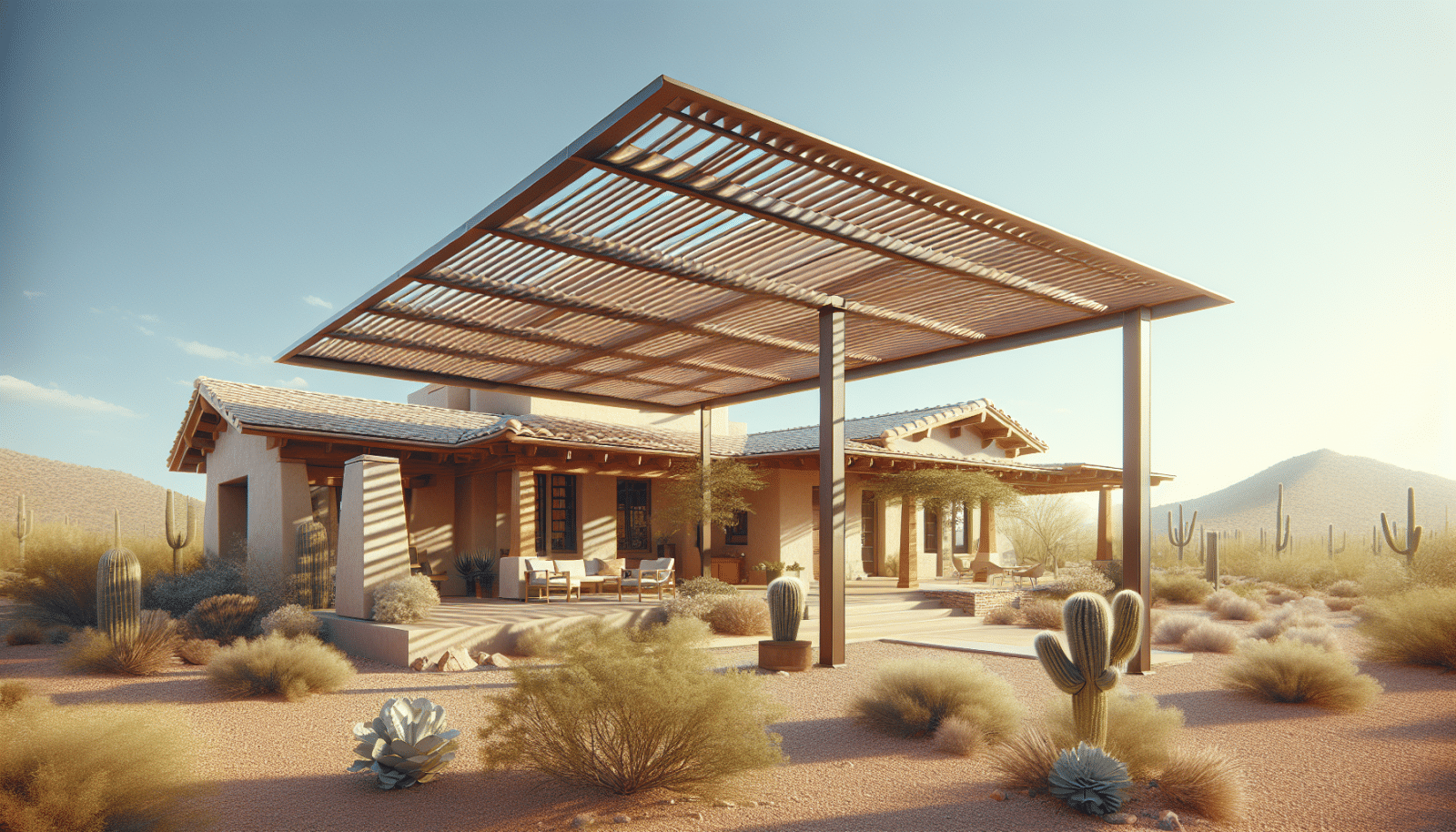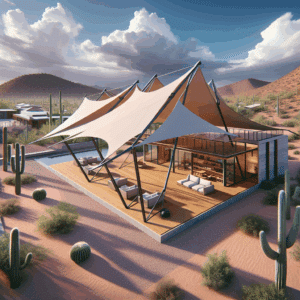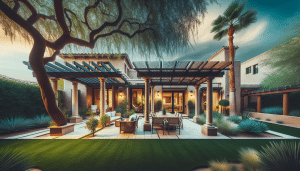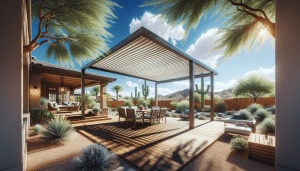At Arizona Shade Sails, we know that choosing the right material for your shade structure can be a daunting task. Many homeowners face the challenge of finding a balance between aesthetics, durability, and cost-effectiveness. That’s why we’ve created this comprehensive overview to guide you through the various material options. This article will help those in Arizona make an informed decision, ensuring your shade structure meets all your needs.
Contents
- 1 Understanding Different Shade Structure Materials
- 2 Fabrics: A Popular and Versatile Choice
- 3 Metal: Durability and Strength
- 4 Wood: A Natural and Classic Option
- 5 Comparing Durability
- 6 Maintenance Requirements
- 7 Climate Considerations
- 8 Cost and Budgeting
- 9 Aesthetic Appeal
- 10 Environmental Impact
- 11 Get Started with Arizona Shade Sails
Understanding Different Shade Structure Materials
When it comes to Shade Structures, the material you choose plays a crucial role in functionality and appearance. Each material offers unique benefits, making it essential to understand your options.
First, let’s explore the most common materials used for shade structures. These include fabrics, metals, and even wood. By diving into the specifics, you can see which type aligns best with your preferences and requirements.
Additionally, we’ll discuss how climate, usage, and budget can impact your choice. From UV protection to maintenance ease, every factor will be covered to help you decide confidently.
Fabrics: A Popular and Versatile Choice
Fabrics are a go-to material for many shade structures. Known for their flexibility and adaptability, they can be used in various designs.
One of the main advantages of Fabric shade structures is their ability to provide excellent UV protection. Fabrics like polyethylene and PVC-coated polyester are designed to block harmful sun rays.
Moreover, fabrics are lightweight and easy to install. This makes them an attractive option for homeowners looking for a quick solution with high versatility.
Metal: Durability and Strength
Metal shade structures offer unmatched durability and strength. Popular materials include aluminum and steel.
Aluminum is rust-resistant and lightweight, making it ideal for long-lasting outdoor structures. Steel, on the other hand, offers even greater strength but can be prone to rust without proper treatment.
These metals can withstand harsh weather conditions, ensuring your shade structure remains intact for years. Their robust nature makes them perfect for areas with high winds or potential storm exposure.
Wood: A Natural and Classic Option
Wood has always been a favorite for its natural beauty and timeless appeal. Commonly used woods include cedar and redwood.
Cedar is resistant to decay and insects, making it a durable choice for outdoor use. Redwood is also highly resilient and offers a rich, attractive appearance.
Wooden shade structures blend seamlessly with natural surroundings, providing a rustic charm that many homeowners love. However, they require regular maintenance to preserve their look and longevity.
Comparing Durability
Durability is a key factor when selecting a material for your shade structure. Let’s compare the longevity of different materials.
Fabric materials, while providing excellent UV protection, may wear out faster than metal or wood. Regular exposure to the elements can lead to fading and tearing over time.
On the other hand, metals like aluminum and steel boast superior durability. They can last for decades with minimal maintenance, making them a long-term investment. Wood falls somewhere in between, offering good durability with moderate upkeep.
Maintenance Requirements
Every material comes with its own set of maintenance needs. Understanding these will help you keep your shade structure in top condition.
Fabric: Requires periodic cleaning and inspection for tears or damage. UV-resistant sprays can help prolong its life.
Metal: Mostly low-maintenance but may need occasional cleaning and rust prevention treatments, especially for steel.
Wood: Demands regular sealing and staining to protect against weathering and pests.
Climate Considerations
Your local climate significantly influences the ideal material for your shade structure. Considering Arizona’s intense sun and occasional storms, the right material should be resilient.
Fabrics designed for UV protection are great for hot, sunny climates. Materials like polyethylene are specifically engineered to block excessive sun exposure.
Metals, particularly aluminum, are suited for climates with diverse weather conditions due to their strength and durability. Wood structures, while attractive, may require more maintenance in harsh climates to ensure longevity.
Cost and Budgeting
Budget is often a determining factor when choosing a shade structure material. Here’s a breakdown of the cost implications for each option.
Fabric: Generally the most cost-effective, with prices varying based on quality and UV protection levels. It’s perfect for those seeking a budget-friendly solution.
Metal: Tends to be more expensive initially but offers cost savings over time due to minimal maintenance and long lifespan. It’s a worthwhile investment for durability.
Wood: Costs can vary widely depending on the type of wood. Cedar and redwood tend to be pricier but provide exceptional natural aesthetics and resilience.
Aesthetic Appeal
The look of your shade structure can greatly impact the overall appearance of your outdoor space. Each material brings its own visual perks.
Fabrics offer a range of Colors and patterns, allowing for creative designs and personalization. They can add a vibrant and modern feel to any area.
Metal shade structures exude a sleek, contemporary look. Their clean lines and metallic finish can complement modern architecture beautifully.
Wood, with its natural grains and textures, adds a warm, earthy charm to any space. It’s perfect for those aiming to create a cozy, inviting atmosphere.
Environmental Impact
Lastly, let’s consider the environmental footprint of each material. Being eco-friendly is becoming increasingly important to many homeowners.
Fabrics such as those made from recycled materials can be an eco-conscious choice. However, they may not be as durable, leading to more frequent replacements.
Metal materials are recyclable and often have a lower environmental impact over their lifespan due to their longevity. Choosing metal can be a sustainable option.
Wood is a renewable resource, but it must be sourced responsibly to avoid deforestation. Opting for certified sustainable wood ensures your shade structure is both beautiful and eco-friendly.
Get Started with Arizona Shade Sails
Ready to choose the perfect material for your shade structure? Contact Us today by phone # 480-418-8438 or Request a Free Quote.




